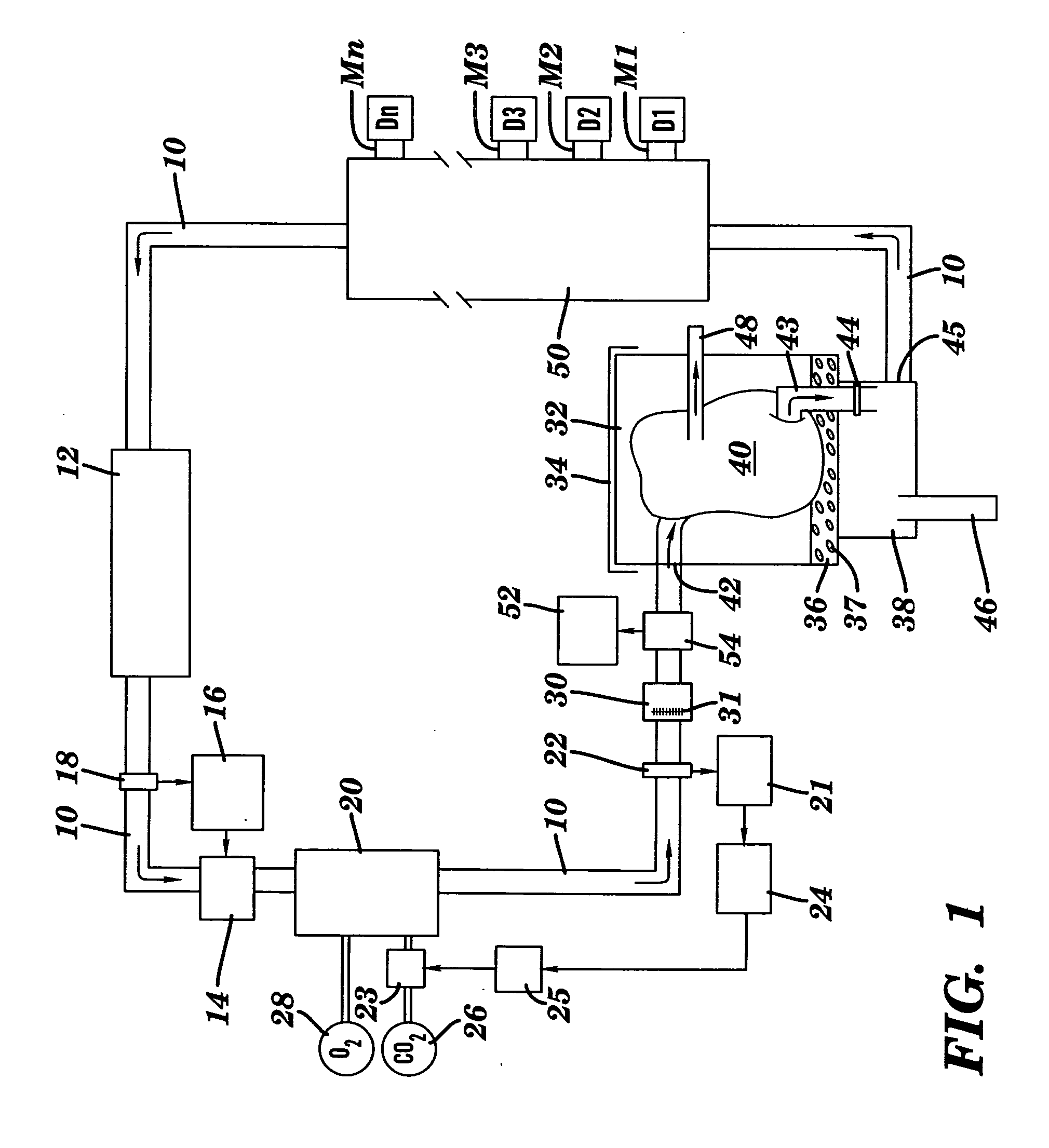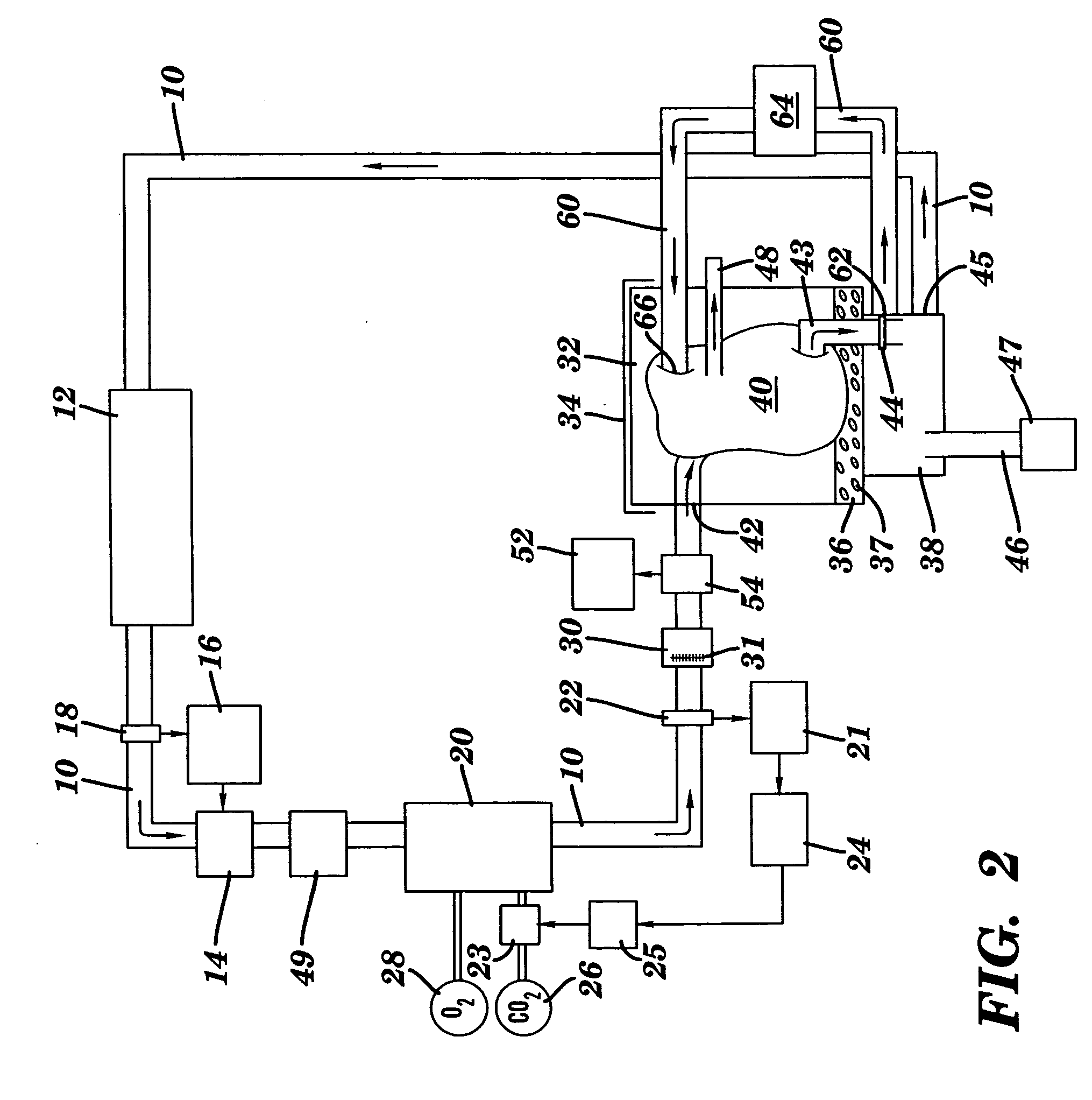System for exsanguinous metabolic support of an organ or tissue
a metabolic support and organ technology, applied in the field of metabolic support systems, can solve the problems of limiting clinical transplantation, persistent shortage of organs, extreme shortage of organs for transplantation, etc., and achieve the effect of evaluating the effectiveness of the invention in supporting the organ culture of various organs and tissues
- Summary
- Abstract
- Description
- Claims
- Application Information
AI Technical Summary
Benefits of technology
Problems solved by technology
Method used
Image
Examples
example 1
[0076] Canine kidneys were isolated, the renal artery was cannulated and the solution was applied with the process and system of the present invention. All blood was removed from the kidneys and the kidneys were perfused with the solution. The kidneys were maintained with the support of the EMS organ culture technology at 32.degree. C. for three days. Similarly, a physiologic pH, osmolarity, pressures, flow rates, and oxygen consumption were maintained during the period of the EMS organ culture. The kidneys remained intact and continued to metabolize during the period of organ culture. The ongoing metabolism in the kidneys remained sufficient to result in continued function, that is, the kidneys continued to produce urine through out the period of the organ culture. The results of the culture of intact whole kidneys is listed in Table 2. There was no deterioration in metabolism or function in any parameter category during the period of the EMS organ culture. Similarly, no edema deve...
example 2
[0077] In order to evaluate species differences, bovine kidneys were also tested. Bovine kidneys were placed in EMS organ culture for three days using the same techniques described in Example 1. Similar to the results using canine kidneys, the bovine kidneys could be maintained in EMS organ culture, intact for three days without loss of ongoing metabolism or resulting function. Similar to the results obtained with canine kidneys, the bovine kidneys exhibited stable perfusion pressures, flow rates and lack of edema during the period of organ culture. Upon histologic evaluation, the bovine kidneys appeared normal, with excellent preservation of all components of the kidney architecture.
example 3
[0078] Hearts from rats were excised and the aorta was cannulated. The hearts were placed in EMS organ culture with the present invention and maintained for 24 hours. The results of the testing using the rat hearts are listed in Table 3.
5TABLE 3 Rat Hearts in Organ Culture PARAMETERS RESULTS* N 6 perfusion pressure systolic 50 mmHg flow rate 30 cc / min edema <10% wgt gain function mechanical & electrical histology normal *after 24 hours of EMS organ culture
[0079] Following the period of EMS organ culture, three of the hearts were transplanted to evaluate if the hearts were of sufficient integrity to sustain life. All three hearts beat spontaneously, without assistance, and were able to sustain life.
PUM
 Login to View More
Login to View More Abstract
Description
Claims
Application Information
 Login to View More
Login to View More - R&D
- Intellectual Property
- Life Sciences
- Materials
- Tech Scout
- Unparalleled Data Quality
- Higher Quality Content
- 60% Fewer Hallucinations
Browse by: Latest US Patents, China's latest patents, Technical Efficacy Thesaurus, Application Domain, Technology Topic, Popular Technical Reports.
© 2025 PatSnap. All rights reserved.Legal|Privacy policy|Modern Slavery Act Transparency Statement|Sitemap|About US| Contact US: help@patsnap.com



